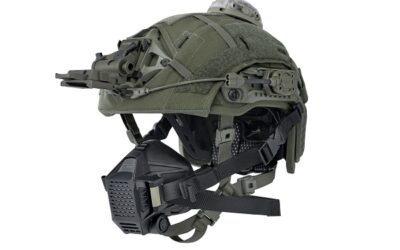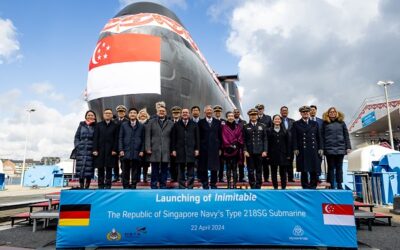Strong Potential for Small Business Involvement and Innovation
Two US DoD officials have openly discussed the importance of developing an efficient, effective modular open systems architecture (MOSA) in the context of directed energy weapons.
Chris Behre, the lead for Directed Energy MOSA in the Office of the Undersecretary of Defense for Research and Engineering, as well as being Technical Director of the Surface Navy Laser Weapon System Portfolio for Naval Surface Warfare Center’s Dahlgren Division, and Dr Sean Ross, the deputy High Energy Laser Technical Area lead and prototyping liaison for the Air Force Research Laboratory, spoke at the Directed Energy Series, sponsored by Booz Allen Hamilton, on 11 August.
MOSA is important because it allows components and subsystems of the weapon to be standardised, Behre said. That will allow for incremental system upgrades and minimise obsolescence, while reducing costs and shortening the developmental timeline.
One way to think of MOSA is as “guard rails to guide things — not hard, level requirements that stifle innovation,” he suggested. Teams of engineers and DoD officials are working on developing a MOSA draft that will be available for comment in less than a year, he revealed. Ross added that, if MOSA is done right, it has strong potential to decrease market barriers. Nontraditional vendors with niche capabilities would want to compete, he observed, and there could be an increase in small business involvement and innovation. Laser weapons system subsystems include thermal management, laser weapon controller, beam control, laser source and power management. Industries that specialize in any of these subsystems may find a ready market within DoD if their designs show promise.
MOSA allows for flexibility and not overprescribing, Ross said, citing two examples. Within a laser system, the operating temperature of the diodes is one of the most important factors in laser effectiveness. “It is one of the major SWaP drivers with competing effects,” he explained. “The higher the diode temperature, the less efficient the laser is. However, the thermal management system works most efficiently with higher diode temperatures. So, deciding an arbitrary temperature in the MOSA standard would be very risky and result in a suboptimal system.”
His second example is based on the standard that the higher the voltage used in the laser, the lower the required weight of the copper conductive wires. If the voltage is too high, there would be arcing and a corona effect — two undesirable outcomes. The solution, he suggested, is for the government to come up with broad standards, letting industry come up with the finer details.
A successful MOSA standard is one that gets industry excited and eager to take on the challenges and run with it: if it makes no sense, everyone will just ignore it and innovation and competition will come to a halt, he concluded.

























